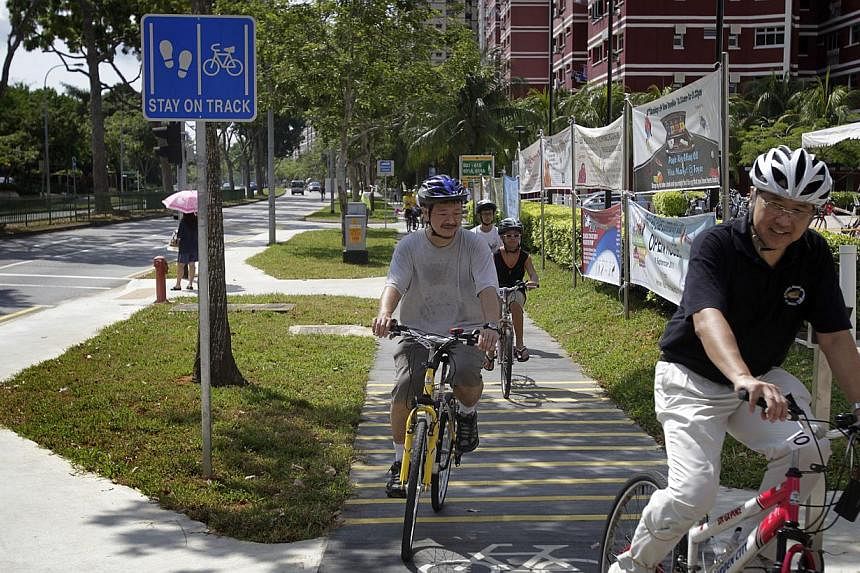
Giving priority to street-level crossings, providing protected bike lanes and setting lower speed limits for motorists are ways to promote walking and cycling in Singapore, said a new study to make tropical cities more liveable.
The study released yesterday by the Centre for Liveable Cities (CLC) here and the US-based Urban Land Institute said cities where citizens are most mobile have the lowest obesity rates.
Mobility is also important for well-being. For instance, the great emphasis given to walking and cycling is essential to the high quality of life experienced by residents in Copenhagen, which was named the most liveable city by Monocle magazine last year.
To promote mobility, pedestrian and cycling networks must be made convenient and efficient, integrated with public transport or else "people won't use (them)", said CLC director Hee Limin.
Among the 10 recommendations for improving mobility, one was to have dedicated infrastructure to minimise conflict with other users and enhance safety.
It flagged road junctions as a hot spot for accidents, and said these should be designed so motorists are able to look out for pedestrians and cyclists when turning. Painted cycling lanes, like those in Copenhagen, also raise visibility.
Given the tropical climate, infrastructure should be designed to promote continuity of movement for pedestrians and cyclists.
For instance, sidewalks should be level with the road instead of being separated by a kerb so cars are made to stop and watch out for pedestrians and cyclists, instead of the other way round.
Other recommendations include setting low speed limits in areas with high pedestrian traffic and having more street-level crossings instead of overhead bridges. End-of-trip amenities like shower facilities and bicycle parking should also be provided.
Said Dr Hee: "In Singapore, cycling is still seen as a less desired form of mobility. This is something that needs to change."
The study, which roped in renowned Danish architect Jan Gehl, looked at Ang Mo Kio estate as an example of the challenges to walking and cycling. It found that roads are generally quite wide, so cars tend to travel faster. Overhead bridges facilitate these "mini highways", while junction design and inadequate bicycle parking were flagged as issues that made walking and cycling undesirable.
Former Land Transport Authority traffic planner Gopinath Menon said planners could have been "more lax" in deciding when to use overhead bridges. He noted they were hard on the elderly and disabled, while ramps and lifts take time and money to put in.
Melbourne Lord Mayor Robert Doyle, one of four panellists who commented on the study at the summit, said much planning is needed to create a coherent, connected cycling network: "In the end, human life and preventing serious injury comes a long way ahead of motorists' convenience."
Looking ahead, Dr Hee said transportation infrastructure has to be reviewed, to determine how to allocate space. "It's not a bad trade to give more space to people, rather than cars."


